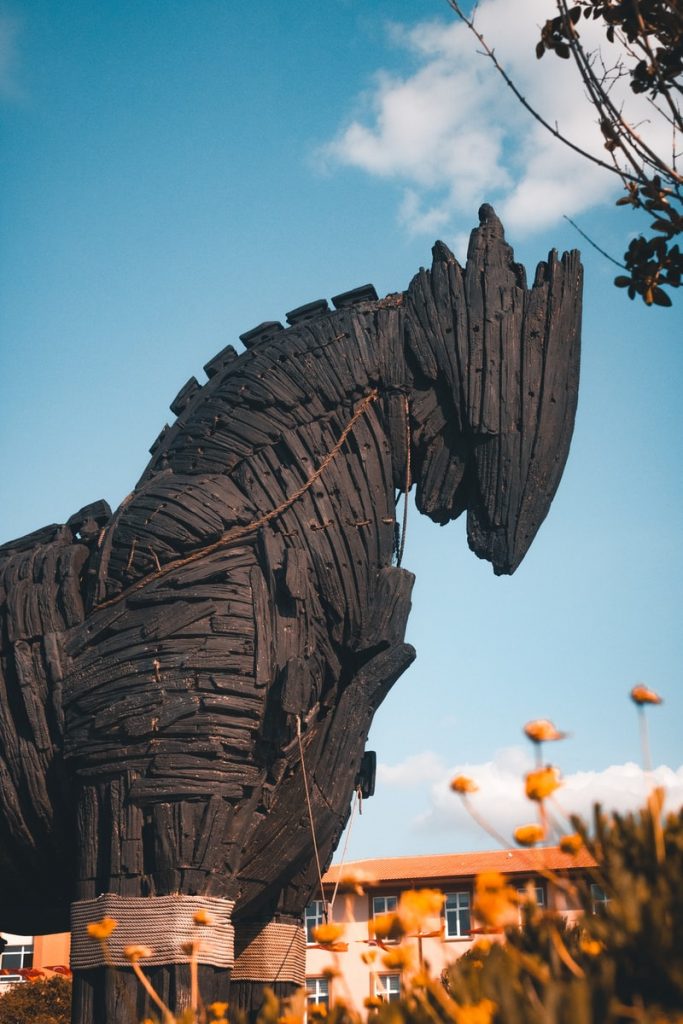Troy (Greek: Τροία and Latin: Troia, Hittite: 𒋫𒊒𒄿𒊭 Truwiša) or Ilion (Greek: Ίλιον and Latin: Ilium, Hittite: 𒃾𒇻𒊭 Wiluša) was an ancient city located at Hisarlik in present-day Turkey, 30 kilometres (19 mi) south-west of Çanakkale and about 6 kilometres (4 mi) miles east of the Aegean Sea. It is known as the setting for the Greek myth of the Trojan War.
[trp_language language=”en_US”]Until the late 19th century, scholars regarded the Trojan War as entirely legendary. However, starting in 1871, Heinrich Schliemann and Frank Calvert excavated the site of the classical era city, under whose ruins they found the remains of numerous earlier settlements. Several of these layers resemble literary depictions of Troy, leading some scholars to conclude that there is a kernel of truth to the legends. Subsequent excavations by others have added to the modern understanding of the site, though the exact relationship between myth and reality remains unclear.
The archaeological site of Troy consists of nine major layers, the earliest dating from the Early Bronze Age, the latest from the Byzantine era. Each of these layers has sublayers for a total of 46 strata. The mythic city is typically identified with one of the Late Bronze Age layers, such as Troy VI, Troy VIIa, or Troy VIIb. The archaeological site is open to the public as a tourist destination, and was added to the UNESCO World Heritage list in 1998.
For fantastic travel opportunities to Troia with Bravo Travel, keep following!
[/trp_language]